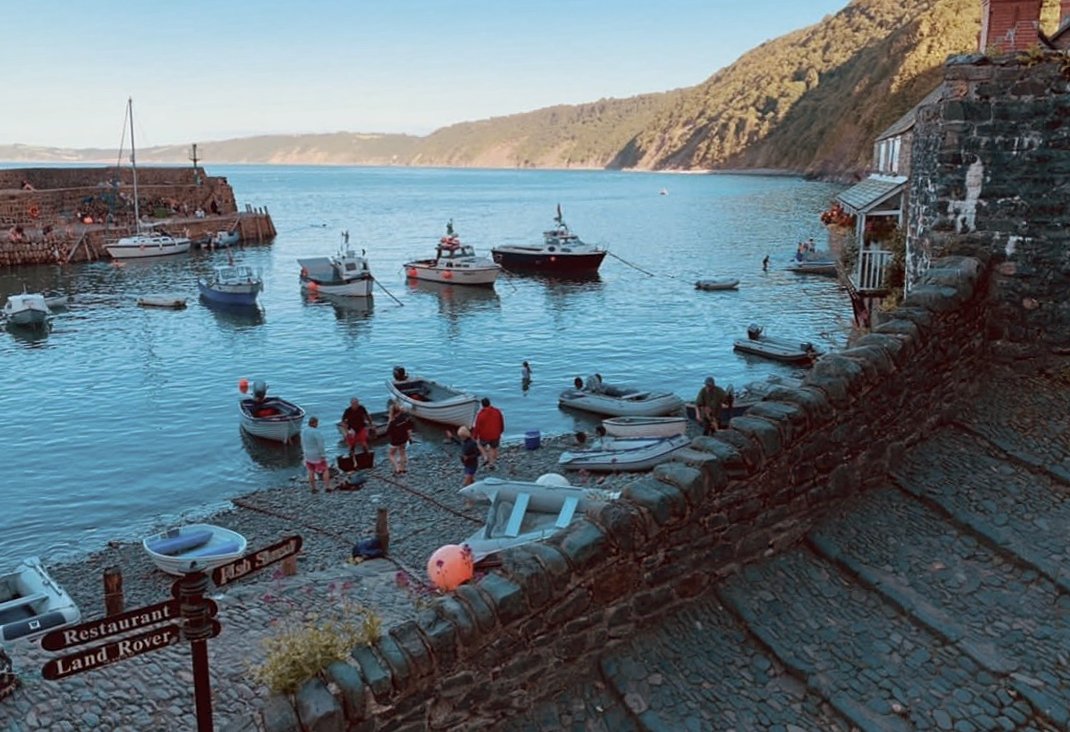The Atlantic Highway spans 134 miles across North Devon and North Cornwall. Passing fishing villages, beautiful coastlines and some of the rural South West’s finest scenery, this epic driving route is often overshadowed.
Though it technically begins in Barnstaple, the A39 actually stretches all the way along the coast north of Devon into Somerset. The tree-lined Exmoor cliffs at Lynmouth and Porlock can be enjoyed on this route, before joining up with the official Atlantic Highway in North Devon. Rick Turner of Visit North Devon & Exmoor said: “The Atlantic Highway is the perfect choice for a road trip in North Devon, showcasing idyllic landscapes and seascapes alike as you travel down the A39 that links North Devon and North Cornwall. It connects the busy town of Barnstaple to some of our most beautiful coastal areas including Bideford, Clovelly and Hartland. A must-see if you’re driving across the South West!”
From here, the A39 winds south towards the ancient town of Bideford, where you have the opportunity to take a small diversion to the adjacent villages of Appledore and Instow, or the wide open beach of Westward Ho!. Just a short stretch further, it’s worth stopping to wander the cobbled streets of Clovelly, a village which has remained unchanged for hundreds of years.
Sue Haworth, Marketing Manager at Clovelly.co.uk said: “Clovelly is a picturesque, historic fishing village steeped in maritime atmosphere, once owned by the Queen of England. This atmosphere is embodied in a traffic-free, cobbled street with flower-strewn cottages, tumbling down a cleft in the 400-foot cliff to the ancient fishing harbour and 14th century quay, bringing glorious views along the way.” For those keen to delve deeper into Devon’s heritage on their road trip, Clovelly is a prime stop. Sue added: “There are many literary connections; Charles Kingsley lived here, Charles Dickens wrote about it and Rex Whistler featured it in much of his work.” If you’re setting off on your trip during the summer, look out for Clovelly’s unique festivals, including the Seaweed Festival and Lobster and Crab Festival.
The beauty of the Atlantic Highway is its multitude of potential stops. There’s something to see almost every few miles, so you can take your time meandering through Devon and Cornwall to transform this 134-mile journey into an epic road trip. Further south, on the Cornish border, the seaside town of Bude has two sandy beaches, stretching down towards Widemouth Bay, a part of the coast reminiscent of California on a sunny day.
From Widemouth, the Atlantic Highway veers further inland, but there’s an opportunity to follow the coastal road through some of North Cornwall’s prettiest towns and villages including Crackington Haven, Boscastle, Tintagel, Port Isaac and Polzeath. You can then meet the A39 down towards Fraddon, where the Atlantic Highway ends.
Don’t miss: Walking through Clovelly, admiring the cliffs at Hartland Quay, walking through the gardens at Hartland Abbey, a cream tea at Docton Mill, a pub lunch at The Bush Inn Morwenstow, a stroll along the sand at Widemouth Bay, stepping back in time at Tintagel Castle.












